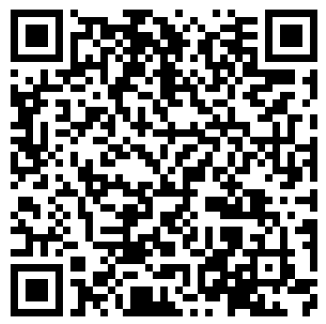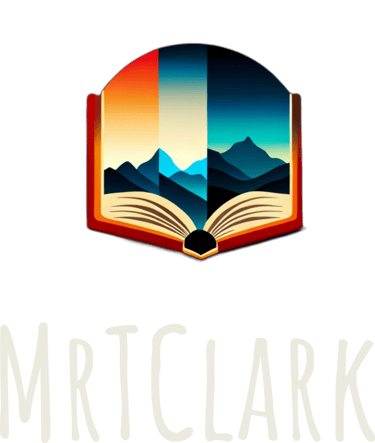Technology in the Classroom
Philosophy
Technology is more than just a means of communication or a tool for productivity. It is a platform for artistic expression and unlimited creativity. In my classroom, we embrace the possibilities that technology brings and explore its potential to enhance our lives. We will learn how to treat our devices with respect and value the people who create and innovate with them. We will emphasize the importance of digital citizenship, fostering empathy and respect while navigating digital spaces. My goal is to teach my students how to make a positive impact on the world through ethical and imaginative use of technology. I will strive toward empowering my students to envision a future where technology is harnessed to improve the lives of all individuals, and in my classroom, we will eagerly work towards achieving that vision.
I believe that technology has the potential to enhance the learning experience by providing additional reinforcement, rather than replacing traditional teaching methods. While it is undeniable that technology can improve learning outcomes, it is important to provide guidance and support to students in order to effectively facilitate and monitor their progress. As a bit of a techie myself, and an educator, I understand the importance of staying up to date on the latest developments in technology and education. I am committed to integrating innovative tools and techniques into my classroom and adapting my teaching approach to effectively connect with and engage my students.
Technology has become an essential component in education, offering students practical and interactive lessons that promote a positive outlook on learning. Students are more engaged when technology is incorporated into their educational experience, as it plays a vital role in their everyday lives. To better connect with students and make use of their familiarity with technology, teaching methods should go beyond traditional approaches.
Technology allows students to connect with the subject matter and actively engage in constructing and evaluating new information. As an educator, my primary responsibility is to facilitate this process by guiding and inspiring each student's curiosity. By incorporating relevant technology in the classroom, I aim to foster problem-solving skills and scientific inquiry among my students. This approach not only empowers them to explore and understand concepts in a more interactive way but also prepares them for the demands of the modern world, where technology is increasingly becoming an integral part of everyday life. By utilizing technology as a tool for learning, I will strive to create a dynamic and innovative educational environment that promotes critical thinking, creativity, and lifelong learning.
Professional Development Plan
As an elementary teacher, I recognize the critical role that educational technology plays in enhancing student engagement, facilitating personalized learning experiences, and preparing students for a rapidly expanding digital age. To continually improve my skills and integrate technology effectively into the classroom, I have developed a professional development plan tailored to my needs and goals.
Self-Assessment and Goal Setting:
I will conduct a self-assessment of my current proficiency with educational technology tools and identify areas for improvement.
I will set specific and measurable goals related to integrating technology into lesson plans, student assessments, and communication with parents.
Research and Stay Informed:
I will regularly read educational technology journals, blogs, and attend conferences to stay updated on the latest trends, tools, and best practices in the field.
I will join online communities and participate in discussions to share experiences and learn from other educators.
Online Courses and Certifications:
I will enroll in online courses and certifications focused on educational technology, including topics such as blended learning, digital literacy, and effective use of educational apps.
I will complete courses that align with the specific needs and challenges of my elementary classroom.
Collaborate with Colleagues:
I will establish a professional learning network within the school and district to collaborate with other educators who excel in integrating technology.
I will organize and participate in regular meetings or workshops to share insights, resources, and successful strategies.
Mentorship and Coaching:
I will seek out a mentor who has expertise in educational technology and can provide guidance, feedback, and support.
I will engage in peer coaching opportunities to observe and be observed in the integration of technology, fostering a culture of continuous improvement.
Experiment and Reflect:
I will integrate new educational technology tools and strategies into lesson plans on a regular basis.
I will reflect on the outcomes, adjusting approaches as needed, and documenting successes and challenges for future reference.
Professional Learning Communities:
I will join or create a professional learning community (PLC) focused on educational technology.
I will participate in regular discussions, workshops, and collaborative projects to deepen my understanding and application of technology in the classroom.
Feedback and Evaluation:
I will solicit feedback from students, parents, and colleagues regarding the effectiveness of technology integration in the classroom.
I will use feedback to make informed adjustments and improvements to my educational technology practices.
By striving toward continuously bettering myself and following this professional development plan, I hope to demonstrate I am committed to becoming a proficient and innovative user of educational technology. I will use what I learn to create a dynamic and inclusive learning environment for my elementary students.
Animaker really stands out to me as a captivating platform for crafting animated videos and presentations, with nearly limitless customization options, creation tools, premade templates, and AI tools. It is a tool I will always recommend for both students and educators alike.
This is a sample of the type of welcome video I would send out to parents in addition to a more detailed written/printed version. This is something that would be shared via our digital classroom space, i.e. Classroom Dojo or Google Classroom, as well as via email. Additionally, something similar would be made for students on the first day of school; something that gets them excited for all the interesting things they will be learning about.
I am a big fan of Animaker. I have used it as a tool throughout my own education and plan to use it as an educator. I feel it is
Animaker
a great tool for making the material engaging and fun. I think it would also make a great tool for developing digital literacy in students. In addition to using it to relay information to parents and students, I would love to teach students how to use it and allow them to create their own collaborative presentations. I think it could be an excellent and fun tool to use for student projects at the end of a unit.
Included in this sample Welcome Video is a QR code that links to what would be my classroom's Classroom Dojo.
Examples:
I am a big fan of both Canva and Jamboard and have started using them in conjunction with one another. When designing an activity I want students to do on Jamboard, I first go to Canva and design the template.
Canva is a versatile graphic design platform that allows both educators and students, to create a wide range of visual content easily. I enjoy using it because it has a very user-friendly interface with drag-and-drop features, and makes graphic design accessible to individuals with varying levels of expertise. One of the greatest aspects of Canva is its collaborative features which support real-time student teamwork and encourage a dynamic learning environment. It has a huge library of design elements, allows for fun and personalized creations, and promotes creativity. This is a tool I would use to visually enhance lessons, and offer students as a tool for creating digital projects and portfolios. Many of its features can be accessed without a premium membership, which would allow both my students and me to use it in the classroom without any concern for cost.
In the two examples above, I created the template I would use in a Jamboard activity and a Welcome Letter I would send home with students in their Welcome Packet. The Welcome Letter is a more detailed version of the Animaker Welcome Video I made above.
Jamboard, or other virtual whiteboards like it, is a tool I will use in my classroom to turn it into an interactive and collaborative space. With Jamboard, I can enhance engagement and facilitate dynamic learning experiences. I can create things like presentations, diagrams, and mind maps, and make complex concepts more accessible to my students. I really like the real-time collaboration feature that will allow my students to contribute simultaneously, promoting teamwork and active participation. Whether we're brainstorming ideas, solving problems, or visualizing concepts, Jamboard provides a virtual canvas where everyone can share their thoughts. Jamboard is accessible both in-person and remotely, making it a versatile tool for in-person, hybrid or fully online classrooms. I appreciate Jamboard within the digital whiteboard space because it is incredibly simple to use and can be easily explored by younger students, encouraging independent exploration and learning. I envision digital whiteboards becoming an essential component of my teaching toolkit, enhancing collaboration and bringing interactivity into my lessons.
Scan the QR code above, or click the link to view an example of a Jamboard activity I would do with students. I created an activity for Kindergarteners to showcase how even the youngest students can pick up and use Jamboard with ease.


Canva & Jamboard
Kahoot!
Kahoot! is an online learning platform that I love using to create, share, and play interactive quiz-based games with students. I find that it works best as a formative assessment tool in classrooms, helping gauge students' understanding of topics in a fun and engaging way.
Kahoot! is a great tool for assessing students in a way that fosters a competitive and enjoyable learning experience. As students participate in Kahoot! sessions, students and educators are provided with real-time feedback, which allows us to instantly gauge comprehension and identify areas of strength or weakness.
The platform's adaptability makes it suitable for both in-person and remote learning, ensuring accessibility for students in diverse settings. The gamified nature of Kahoot! not only promotes active participation and enhances the learning experience. Teachers can customize games to align with specific learning objectives, and the platform's versatility enables its application across a range of subjects.
Included here is a sample Kahoot! I have made for a Kindergarten math lesson that involves identifying shapes based on an outline of the shape or when only part of the shape is visible.
